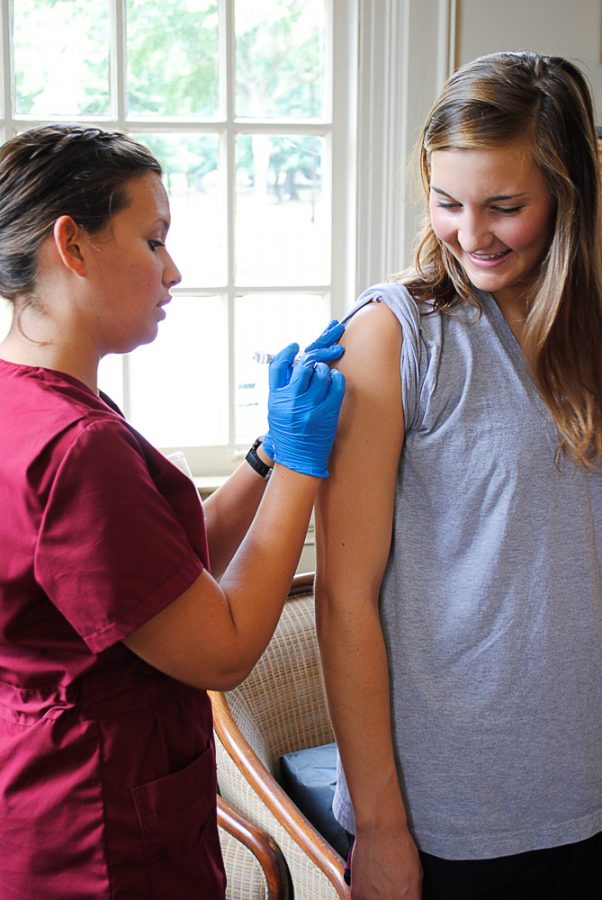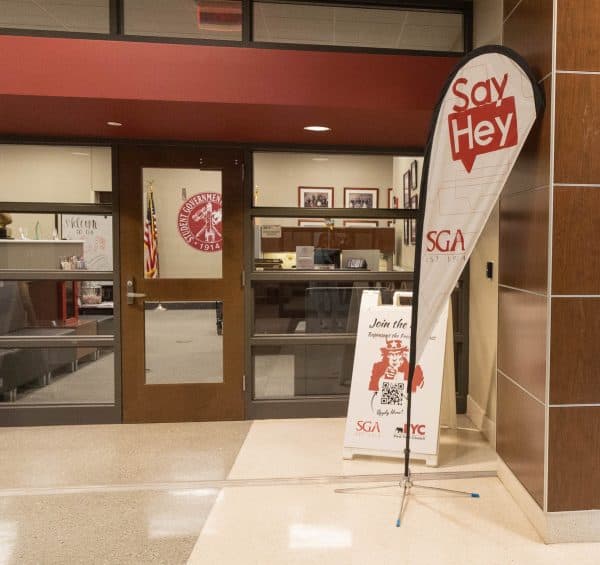University becomes CDC point of dispensary
The Capstone College of Nursing also provides free flu shots to students. Junior nursing student Mollie Wallace administers a flu shot to sophomore Jessica Bell Tuesday afternoon in Daster Hall.
September 17, 2019
The University of Alabama’s Office of Emergency Management simulated a training for a public health emergency during a routine flu vaccination on Tuesday, Sept. 17 from 10 a.m. to 12 p.m.
The University provides flu vaccinations every year free of charge and to all students, staff and faculty. No insurance is required to receive the vaccination, just campus identification numbers. This training exercise will establish the University as a point of dispensary (POD).
The Centers for Disease Control and Prevention (CDC), the Alabama Department of Public Health, and Alabama Center for Disease Control started encouraging large businesses and institutions to have their own closed PODs.
According to the CDC’s website, PODs are “community locations at which state and local agencies dispense and administer medical countermeasures (MCMs) to the public.” MCMs are medical supplies such as vaccines, antiviral drugs, antibiotics, antitoxins and chemical antidotes.
Public PODs are set up to serve the general public, whereas a closed POD, such as the University, is designed for its own community.
“If the CDC declares an emergency and we have to vaccinate large amounts of public, what we are encouraging is that instead of everybody going through a public dispensing, where they get their medication such as an antibiotic or vaccination, that large groups take care of their own,” said Ken Horst, the assistant director of the University of Alabama’s emergency management department.
The University of Alabama is one of those large groups. The University entered a memorandum of understanding with the Alabama Public Health to be a closed POD, which covers students, staff, faculty and dependents of those groups.
At the Coliseum on Tuesday, students, faculty, and staff were able to get their flu shot just like they would in the many other locations on campus during this time of year. The only thing different is that the Emergency Management Department timed individuals for how long it takes to enter and exit when getting vaccinated.
The exercise, which lasted two hours, will give the department an idea of how many staff they’ll need in the case of a crisis, which would need to be prepared to serve up to 50,000 people inside 36 hours.
Horst said the flu vaccination is an excellent way to practice for a public health emergency.
“Vaccinations are the most difficult because it takes more time,” Horst said. “You have sharps and biohazards that have to have collections, and that kind of thing, as opposed to being an antibiotic, and you coming by picking up a pill pack.”
The CDC or the Alabama Department of Public Health would be the organizations that would declare the type of emergency that would use PODs.
Tommy Dockery, the Director of Emergency Preparedness of West Central District of Alabama, said the University has the largest closed POD in Alabama.
What would trigger the use of a POD would be a public health emergency such as an outbreak of meningitis, mumps, and other infectious diseases, influenzas, swine flu, or a biological attack. In many cases, vaccinations would be the best way to handle many outbreaks.
PODs are designed to have medical supplies dispensed inside 48 hours, with 12 of those hours dedicated to transport and set-up time. After the CDC or the local health department declares the emergency, the supplies are transported from undisclosed locations with law-enforcement escorts to various locations.
In the case of a crisis, the Tuscaloosa Emergency Management Agency would collect the supplies and get them to their respective PODs such as the University’s. Then the PODs will have 36 hours to distribute the medication.
“Instead of waiting in line at a public POD, you could get treated in-house, and faster,” Dockery said.











